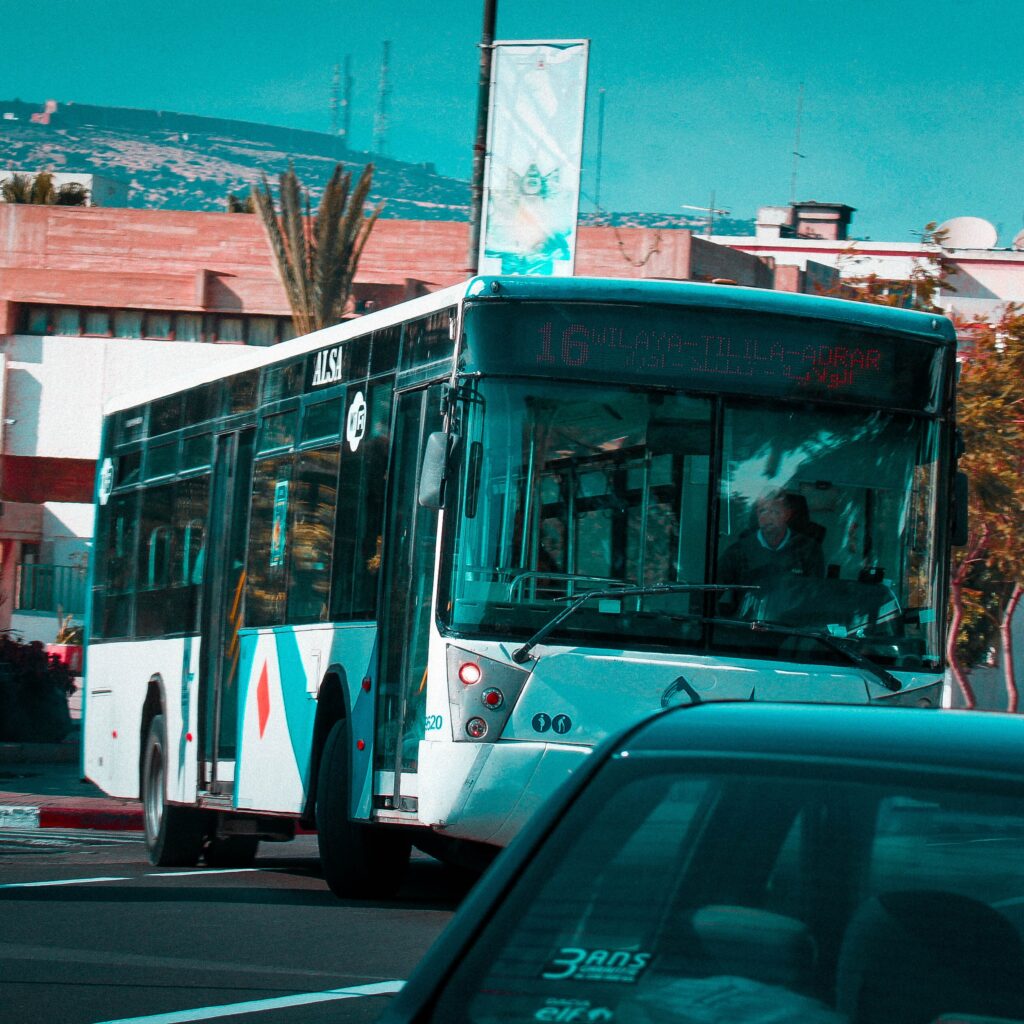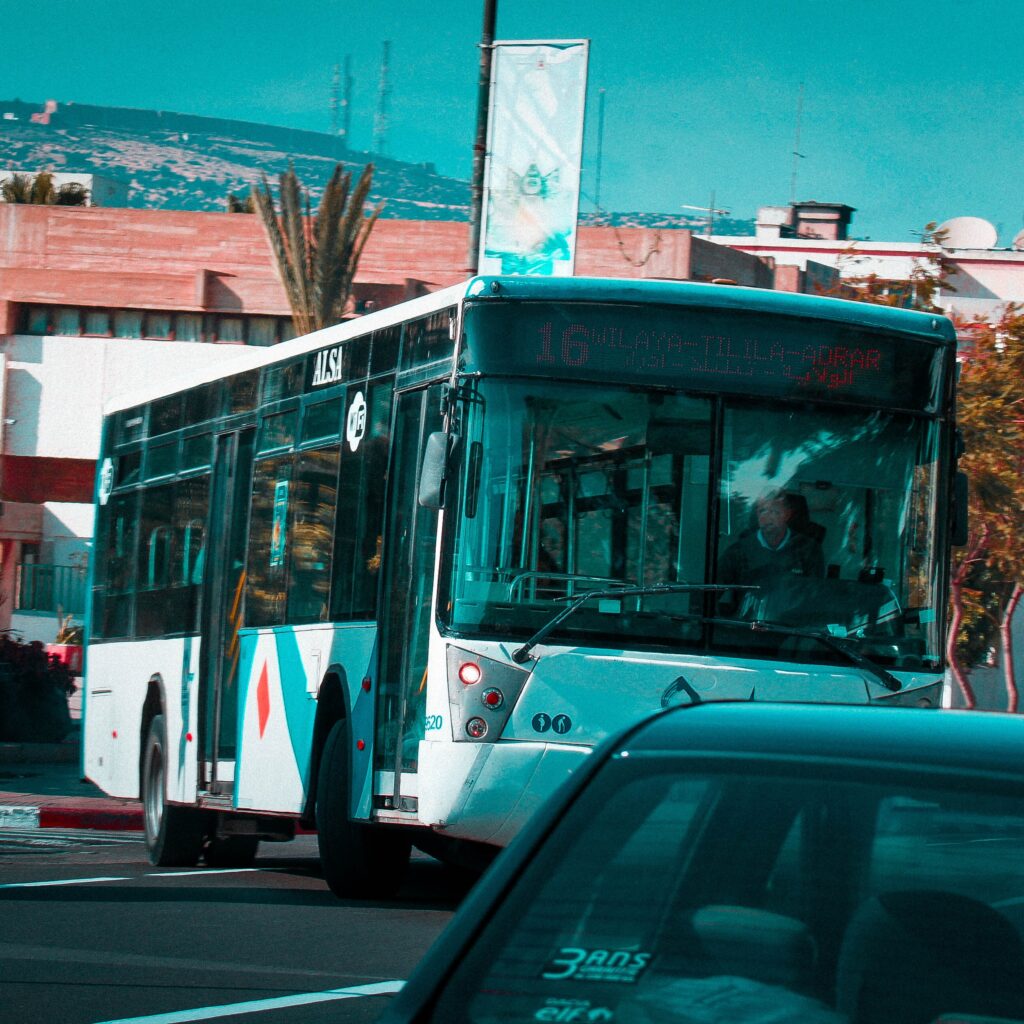In this article, you’ll learn all about using public transportation in major Hawaiian cities. We’ll cover everything from bus and rail systems to fares, routes, and schedules. Whether you’re a tourist or a local, understanding how to navigate the public transportation options can make your travels in Hawaii much more convenient and cost-effective. So, let’s dive right in and discover the ins and outs of using public transportation in Hawaii!

Overview of Public Transportation in Major Hawaiian Cities
If you find yourself in one of the major Hawaiian cities, such as Honolulu or Maui, and you’re looking for a convenient and cost-effective way to get around, public transportation is the way to go. With a variety of modes to choose from, including buses, shuttles, and light rail, there are plenty of options available to residents and tourists alike. In this article, we’ll take a closer look at the different modes of public transportation, the benefits of using them, and how to navigate the system effectively.
Different modes of public transportation
In major Hawaiian cities, the most common mode of public transportation is the bus. The bus network covers a wide range of routes, making it easy to reach most destinations within the city. Additionally, some cities also offer shuttles or trolleys, which are smaller vehicles that operate on specific routes or within designated areas. Another mode of transportation that is currently being developed in Honolulu is the light rail system. Although it is still under construction, once completed, it will provide another efficient and convenient option for getting around the city.
Benefits of using public transportation
There are several benefits to using public transportation in major Hawaiian cities. Firstly, it is a more sustainable and environmentally friendly option compared to driving a car. By using public transportation, you contribute to reducing traffic congestion and carbon emissions. Additionally, public transportation can also save you money. Instead of spending on gas, parking, and maintenance, you can purchase a bus pass or single fare ticket, which is generally much more affordable. Moreover, public transportation provides an opportunity to connect with the local community and experience the culture firsthand. You can interact with fellow passengers and get a sense of the city’s atmosphere that you might miss when driving alone.
Public Transportation Routes and Schedules
Understanding bus routes
Understanding the bus routes in major Hawaiian cities is crucial for effectively using public transportation. Each bus route has a specific number or letter designation, and it typically represents a specific area or destination. For example, in Honolulu, “TheBus” system uses a numbered route system, with each number representing a different part of the island. It’s important to familiarize yourself with the routes that are relevant to your planned destinations so that you can choose the right bus to take.
Finding bus schedules
To make your public transportation experience smoother, it’s important to find out the bus schedules. The schedules vary depending on the day of the week and the time of day, so it’s important to plan your trips accordingly. You can find the bus schedules online on the official website of the public transportation agency or download a smartphone application specifically designed for this purpose. These apps often provide real-time updates on bus arrivals and departures, making it easier to plan your journey.
Inter-city transportation options
If you’re planning to travel between major Hawaiian cities, there are several inter-city transportation options available. One popular choice is the intercity bus service, which offers regular trips between cities like Honolulu, Maui, and Hilo. These services usually operate on a fixed schedule, and you can purchase tickets in advance or at the bus station. Another option is the inter-island ferry service, which allows you to travel between different islands. This can be a scenic and enjoyable way to explore more of Hawaii and experience the beauty of the islands.

Purchasing Tickets and Passes
Types of tickets available
When using public transportation in major Hawaiian cities, there are different types of tickets available for purchase. The most common option is the single fare ticket, which allows you to pay for a one-way trip. Another option is the day pass, which provides unlimited travel within a specified time frame, usually 24 hours. Some cities also offer weekly or monthly passes, which are ideal for regular commuters or tourists planning an extended stay. These passes often offer a discounted rate compared to purchasing single fare tickets every day.
Where to buy tickets
You can purchase tickets for public transportation in major Hawaiian cities from various locations. Most cities have vending machines at bus stops or transit centers where you can buy single fare tickets. In addition, you can also buy tickets directly from the bus driver when you board the bus. For day passes, weekly passes, or monthly passes, it’s best to visit the transit agency’s customer service center or their website to make the purchase. Some cities also offer the option to purchase tickets using mobile apps, making it even more convenient for travelers.
Benefits of using passes
Using passes for public transportation in major Hawaiian cities has several benefits. Firstly, they offer cost savings, especially if you plan on using public transportation frequently during your stay. For example, a day pass may be more cost-effective than buying multiple single fare tickets throughout the day. Secondly, passes provide flexibility and convenience. With a pass, you don’t have to worry about having exact change or buying tickets every time you board a bus. They provide unlimited access to buses or other modes of transportation within the specified time frame, making it easier and more efficient to get around the city.
Navigating the Public Transportation System
Using maps and apps
When navigating the public transportation system in major Hawaiian cities, maps and apps can be extremely helpful. Most cities provide detailed maps of their bus routes, which can be found at bus stops, transit centers, or on the official website of the public transportation agency. These maps show the different routes, stops, and major landmarks, making it easier to plan your journey. Additionally, smartphone apps specifically designed for public transportation can provide real-time updates on bus locations, arrivals, and departures, ensuring you stay on schedule and never miss a bus.
Locating bus stops and stations
Finding bus stops and stations is essential for using public transportation effectively. Bus stops are usually marked with a sign that displays the bus route number and a designated area for passengers to wait. It’s important to note that not all bus stops are the same, and some may only serve specific routes or have limited amenities. Transit centers, on the other hand, are larger stations with multiple bus routes operating from a central location. They usually have additional amenities such as seating, restrooms, and ticket vending machines. Familiarize yourself with the locations of bus stops and transit centers in your area to make your public transportation experience as smooth as possible.
Understanding fare systems
Each major Hawaiian city has its own fare system for public transportation. It’s important to understand how these fare systems work to ensure you pay the correct amount for your trip. In most cases, you will pay the fare when you board the bus, either by inserting coins into a farebox or by presenting a validated ticket to the bus driver. Some cities also offer reloadable fare cards or smart cards that you can load with credit and tap on a card reader when boarding the bus. Make sure to familiarize yourself with the specific fare system in your city to avoid any confusion or issues when using public transportation.

Planning Trips Using Public Transportation
Tips for planning routes
When planning your trips using public transportation in major Hawaiian cities, there are several tips that can help you navigate the system more efficiently. Firstly, plan your route in advance by using maps or smartphone apps. Determine the bus routes that will take you to your destination and identify any transfers or connections you may need to make. Secondly, consider the time of day and the frequency of bus service. Some routes may have reduced service during off-peak hours or weekends, so it’s important to check the schedules to ensure you won’t be waiting for an extended period of time.
Estimating travel time
Estimating the travel time for your public transportation trips is important for planning your day effectively. Although buses generally run on schedule, factors such as traffic conditions and the number of passengers boarding and alighting can affect travel times. It’s best to allow some extra time for your journey, especially if you have a time-sensitive appointment or event to attend. Remember to take into account any transfers or connections you may need to make, as well as the walking distance between stops or stations.
Transfers and connections
Transfers and connections are often necessary when using public transportation to reach your destination. A transfer happens when you need to switch from one bus to another to continue your journey. Major Hawaiian cities usually have designated transfer points where different bus routes intersect, making it easy to switch buses. It’s important to pay attention to the time between buses and plan your transfers accordingly. If you have a long layover between buses, take the opportunity to explore the area or grab a bite to eat. Additionally, make sure to ask the bus driver or fellow passengers for assistance if you’re unsure about where to transfer or which bus to take.
Accessibility and Special Accommodations
Services for individuals with disabilities
Public transportation in major Hawaiian cities strives to provide accessibility and special accommodations for individuals with disabilities. Buses are equipped with ramps or lifts to assist passengers with mobility challenges in boarding and alighting. In addition, priority seating is available for elderly passengers, pregnant women, or individuals with disabilities. Some cities also offer paratransit services, which are specifically designed for individuals who are unable to use the regular bus service due to their disabilities. These services require advanced reservations and may have specific eligibility requirements.
Special accommodations for elderly passengers
Major Hawaiian cities recognize the needs of their elderly passengers and provide special accommodations to ensure their comfort and safety. Buses are equipped with handrails and grab bars to assist elderly passengers in maintaining their balance during the ride. Additionally, priority seating is available near the front of the bus to make it easier for elderly passengers to access. If you require assistance, don’t hesitate to ask the bus driver or fellow passengers for help. It’s important to note that some cities may also offer discounted fares or special programs for senior citizens, so it’s worth checking with the transit agency for any available benefits.
Stroller and bike policies on public transportation
If you’re traveling with a stroller or a bicycle, it’s important to be familiar with the policies of public transportation in major Hawaiian cities. Most cities allow strollers to be brought onto buses, but they must be folded and stored properly to ensure the safety of all passengers. Some buses also have designated areas or racks for strollers. As for bicycles, many buses are equipped with bike racks on the front, allowing you to bring your bike along for the ride. However, it’s important to note that there may be limited space for bikes, especially during peak hours. Familiarize yourself with the policies and guidelines for strollers and bikes to ensure a smooth and hassle-free journey.
Safety and Security Tips
Being aware of surroundings
When using public transportation in major Hawaiian cities, it’s important to be aware of your surroundings and practice good situational awareness. Keep an eye on your belongings and ensure that they are secure at all times. Be vigilant of any suspicious activity or individuals and report any concerns to the bus driver or transit authorities immediately. Additionally, when waiting at bus stops or transit centers, stand in well-lit areas and avoid isolated or secluded spots.
Protecting personal belongings
To ensure the safety of your personal belongings while using public transportation, there are a few precautions you can take. Keep your valuables, such as wallets, phones, and cameras, secure in a zipped bag or pocket. Avoid displaying expensive items unnecessarily, as it may attract unwanted attention. If you’re carrying a backpack or bag, keep it in front of you where you can see it at all times. It’s also a good idea to label your belongings with your contact information in case they are misplaced or lost.
Reporting safety concerns
If you encounter any safety concerns while using public transportation in major Hawaiian cities, it’s important to report them immediately. Most cities have a hotline or customer service number that you can call to report any incidents or suspicious activities. Additionally, you can also inform the bus driver or other transit staff on board if you feel uncomfortable or unsafe. By reporting safety concerns promptly, you contribute to the overall security of the public transportation system and help ensure a safer journey for everyone.
Etiquette for Riding Public Transportation
Respecting fellow passengers
Respecting fellow passengers is essential when riding public transportation in major Hawaiian cities. Be considerate of other people’s space and avoid blocking walkways or doors. Keep your voice at a reasonable volume and try not to disturb other passengers with loud conversations or music. If you’re traveling with a large group or with luggage, be mindful of the available space and make sure not to inconvenience other passengers.
Proper seating and standing etiquette
When it comes to seating and standing etiquette on public transportation, there are a few guidelines to follow. Priority seating near the front of the bus is designated for elderly passengers, pregnant women, or individuals with disabilities. If you’re sitting in one of these seats and someone who needs it boards the bus, it’s polite to offer your seat to them. When standing, make sure to hold onto handrails or grab bars for stability and avoid blocking the aisle or doors.
Mobile phone and music etiquette
In today’s digital age, it’s crucial to practice mobile phone and music etiquette when using public transportation. Keep your phone conversations to a minimum and avoid speaking loudly, as it can be disruptive to fellow passengers. If you need to have a longer conversation, consider stepping off the bus or finding a quieter area. As for listening to music or watching videos, use headphones and keep the volume at a level that is only audible to you. Being mindful of your electronic devices ensures a more pleasant experience for everyone on board.
Cost of Public Transportation in Major Hawaiian Cities
Understanding fare structure
Understanding the fare structure of public transportation in major Hawaiian cities is important for budgeting your trips. Each city has its own fare system, which may include different rates for adults, children, seniors, or individuals with disabilities. It’s important to check the fare structure in advance to ensure you have the correct fare when boarding the bus. Additionally, some cities offer discounted fares for students or frequent travelers, so it’s worth exploring any available discounts or promotions.
Calculating potential savings
Using public transportation can often lead to significant cost savings compared to driving a car or using other transportation options. To calculate your potential savings, consider the costs of fuel, parking fees, and vehicle maintenance that you would incur if you were to drive. Compare these costs to the price of a bus pass or single fare tickets for your planned trips. You may be surprised at the amount of money you can save by opting for public transportation, especially if you’re a frequent traveler or commuting daily.
Comparing costs with other transportation options
When planning your trips in major Hawaiian cities, it’s worth comparing the costs of public transportation with other transportation options available. Taxis or ride-sharing services may be more convenient for some journeys, but they generally come at a higher cost. Rental cars are another option, but they can be expensive, especially when factoring in parking fees and gas prices. By comparing the costs of different transportation options, you can make an informed decision that suits your budget and preferences.
Conclusion
Using public transportation in major Hawaiian cities is a convenient, cost-effective, and sustainable way to get around. With a variety of modes to choose from and well-established routes and schedules, it’s easy to navigate the system and reach your desired destinations. By understanding the different modes of transportation, purchasing the right tickets or passes, and familiarizing yourself with the routes and schedules, you can make the most of public transportation in major Hawaiian cities. So next time you find yourself in Honolulu, Maui, or any other major Hawaiian city, hop on a bus, and explore the beautiful islands with ease.






